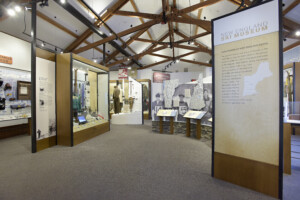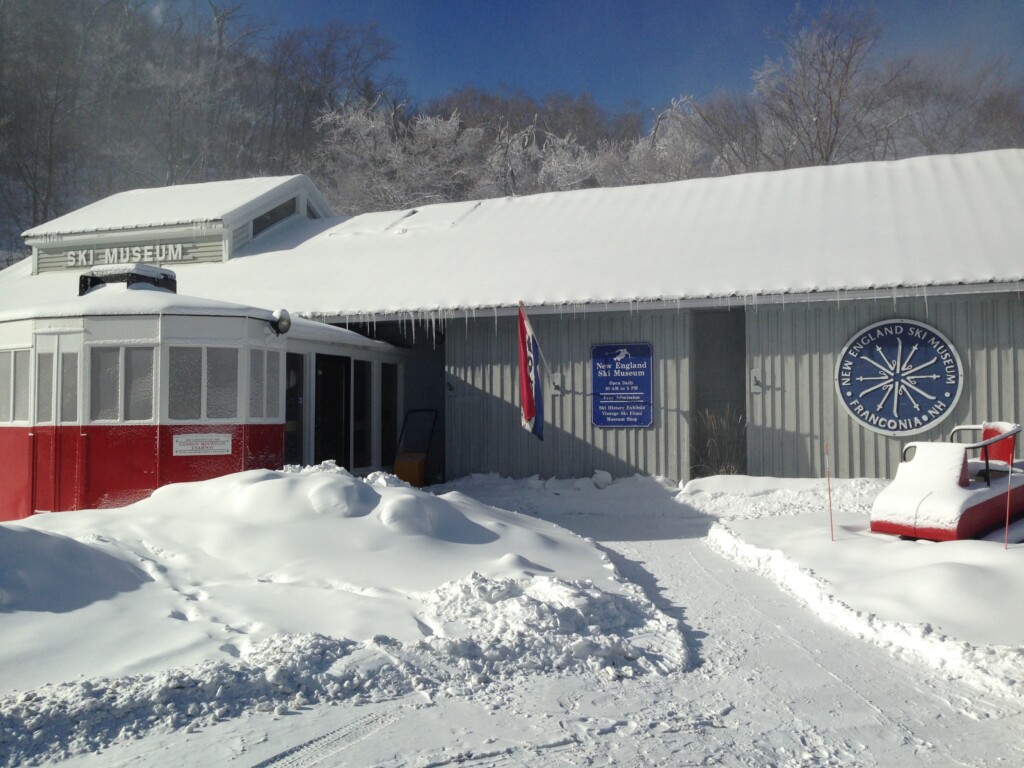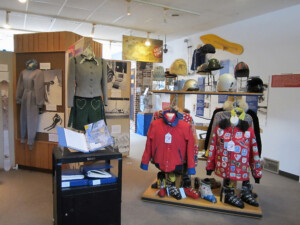New England is steeped in skiing lore, spanning more than a century of winter pursuits. That shared history creates a nostalgic bond between generations, a thread of treasured memories connecting anyone who has ever attached their feet to a pair of skis or snowboard.
Consider the ever-evolving disciplines of skiing and snowboarding, the dramatic improvements in lifts, grooming and snowmaking, and in gear and clothing, making winter sports safer but no less thrilling.
Consider the legendary locations, from Mount Greylock in Massachusetts, Shawnee Peak/Pleasant Mountain in Maine and Suicide Six in Vermont to New Hampshire’s own Mittersill, Wildcat, Black Mountain, Gunstock and Cranmore, the litany of ski clubs like the Massa-Schussers and the Skidaddlers, and groundbreaking programs like Burke Mountain Academy and Carrabassett Valley Academy.
Then consider the fascinating cast of characters, from pioneers like Joe and Brooks Dodge, Dartmouth Outing Club and Appalachian Mountain Club members, Katharine Peckett, Hannes Schneider and Jake Burton Carpenter to competitors such as Andrea Mead Lawrence, Bill Koch, Jessie Diggins, Bode Miller and Mikaela Shiffrin.

The permanent displays at the Eastern Slope
Branch of The New England Ski Museum offer an abundance of education and inspiration.
In short, cold-weather enthusiasts throughout New England, and New Hampshire specifically, deserve a museum that fully represents that rich, frigid history. Fortunately for ski and snowboard buffs, the New England Ski Museum checks all the boxes, providing a world-class winter retrospective.
“The reason that the museum is so important to the region is that so much of this sport, so many ski industry founding fathers and competitive skiing, both Nordic and Alpine, were born and raised here in New England,” said Bo Adams, a museum board member since 1999 and president since 2007. “In addition to New England, the museum and its vast collections speak to the history of skiing throughout North America, and frankly the world.”
The museum’s mission is “to collect, conserve and exhibit elements of ski history for research, education and inspiration, and plays an important role across the region and the globe,” says Jeremy Davis, founder of the New England Lost Ski Areas Project and a museum board member. “The museum provides access to explore this history in many ways — from interactive exhibits, educational programs, journals, social media and special events — including exhibit opening parties and the annual Hannes Schneider Meister Cup Race at Cranmore Mountain.”
“Ski history researchers recognize the museum for its unmatched archives covering all aspects of the sport,” he says. “Without the museum’s work, much of the history would have been lost, but instead can be preserved and celebrated for future generations.”
The job of cataloging and celebrating the region’s winter recreational history falls to a dedicated staff, volunteers and the museum’s executive director, Timothy Whiton, who took the reins in July 2022.
“I do think the museum is a steward of skiing. Our bylaws don’t confine us to New England either, so we really are stewards of skiing’s past and facilitators of its future,” Whiton says. “One can’t adequately forecast the future of any industry without having a strong critical analysis — positive and negative — of the past. That’s what we offer and are able to (do), primarily because of our unrivaled archive.”
The organization is comprised of three structures — two public museums, in Franconia and in North Conway (not far from where the famous “snow trains” dropped off passengers in the mid-1900s), and a warehouse beside Cannon Mountain. They serve as an exhaustive repository of all things related to the region’s love affair with sliding on snow.
“We have the obligatory skis, boots, etcetera, but we have an unrivaled collection of periodicals, clothing, film, library, posters, photographs, ephemera, marketing materials, business records and private papers,” Whiton says. “It is the most complete and comprehensive ski-related archive in North America and one of the top three to five in the world. And we’re continuously growing it.
“Our work is rooted in this archive to ensure that we are staying as close to the truth as possible in what we write, interpret and convey,” he says. “This is what fundamentally sets us apart from ski history organizations outside of Europe and puts us on par with the most preeminent public history institutions in the country.”
The museum’s sparkling reputation has been earned. The New England Ski Museum, said board member Timothy G. Scott, “is widely considered to be one of the finest ski museums in the world, both from its collection and its deep scholarship which has accumulated steadily since its founding in 1977.”
“As a regional asset, we tell the story both of how New Hampshire got its start in skiing as well as the seeds from which skiing evolved in centuries past,” Scott said. “Skiing is the economic engine that made us a four-season destination while emphasizing being out of doors in winter as something to celebrate and aspire to.”
For a quarter century, the museum flourished under the leadership of Jeff Leich,
who retired as executive director in 2022. The organization, he said, is a source of immense pride.
“The museum is a nonprofit with a small staff that fills many roles and works hard, a knowledgeable board and committed members,” Leich says. “The larger challenge is to grow the membership, as members are the source of everything the museum can accomplish, financially of course, but also in that their knowledge, memories and collection donations allow the exhibit and journal content to remain fresh.
“New England was one of the earliest cradles of skiing in the country, and nearly always had the largest regional number of skiers compared to other regions, as measured by the National Ski Association (now U.S. Ski & Snowboard), and some of the most interesting characters and stories have come out of the region,” he says. “When I
started in 1997, collection information was kept on handwritten notebook pages, and collections were housed in board members’ barns.”
Computerization of records began in 2000, and selected photos have been digitized. “The next big step in collections is to select film footage that should be digitized and get it done,” Leich says. “I’m sure that will be a major part of a strategic plan.”
When Leich stepped down, museum’s directors found his replacement next door. A Maine native, Whiton attended Gould Academy and Bates College. He ventured to Montana State University for his master’s, returning home to the University of Maine to pursue his doctorate, writing his dissertation on skiing post-1945 in the United States.
“I grew up Alpine skiing all over New England, but moved towards cross-country in middle school,” said Whiton, who lives in Fryeburg, Maine. “I tend to hit the backcountry on my skinny skis while saving up for a lightweight Alpine Touring setup.”
Whiton’s affinity for the backcountry provides a window into the world of skiing’s early practitioners. Though equipment has improved dramatically, backcountry skiing reflects the same rugged spirit embodied by AMC members who built rudimentary downhill trails in southwestern New Hampshire — notably Barrett and Temple mountains — in the late 1920s.
“Skiing is not singular, isolated experience, but part of much longer historical narratives, social and cultural discourses, and big spans of geography,” Whiton says. “Understanding these is essential to understanding skiing. Being able to understand where skiing is today, how it got here, in order to see where it might be heading is integral to attracting a younger generation of skiers to the museum.”
The museum’s strategic plan, says Adams, is a “road map for us to follow over the next five years or so to expand our outreach, awareness of and utilization of the museum and all that is available to learn, explore and appreciate.”
“Our first and arguably most important step in our strategic plan is the digitization of the museum’s collections,” Adams says. “By digitizing our collection, the public will have a greater opportunity and easier access to explore the museum, which should elevate interest, enthusiasm for what the museum represents, which in turn will grow membership.”
The process promises to be the next step in the museum’s long-held commitment to keep the skiing’s bygone era alive and relevant.



